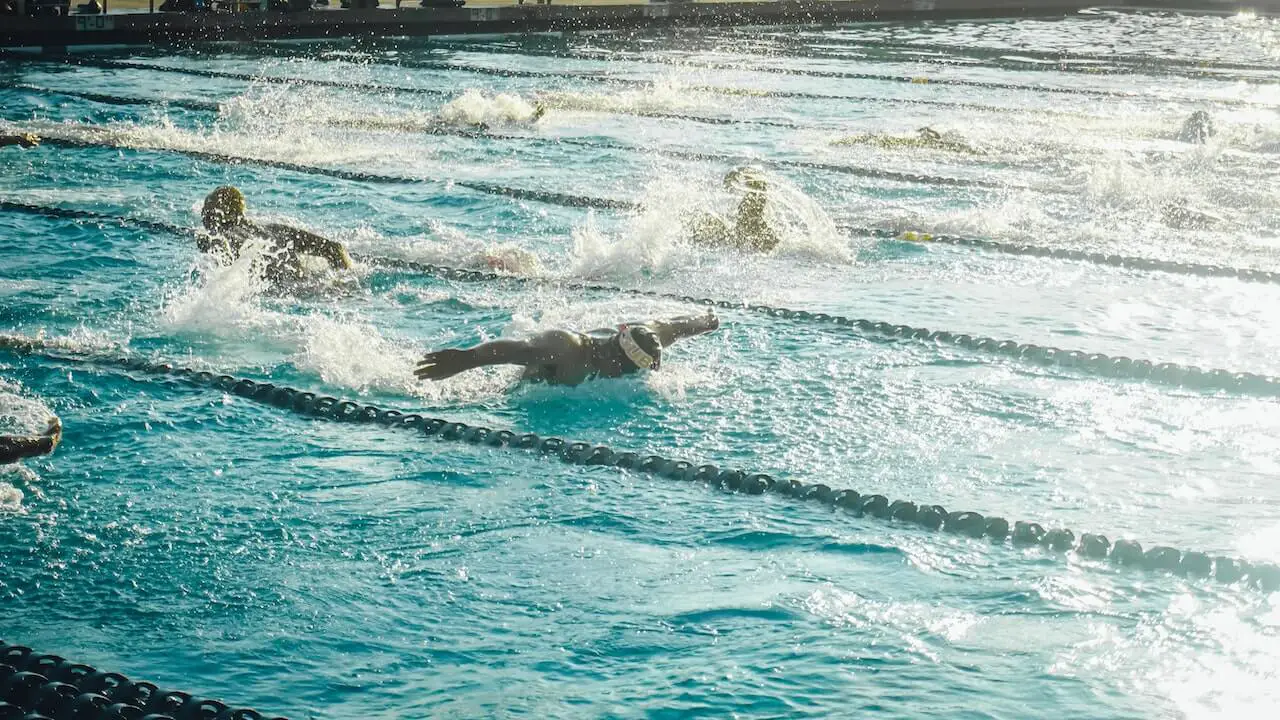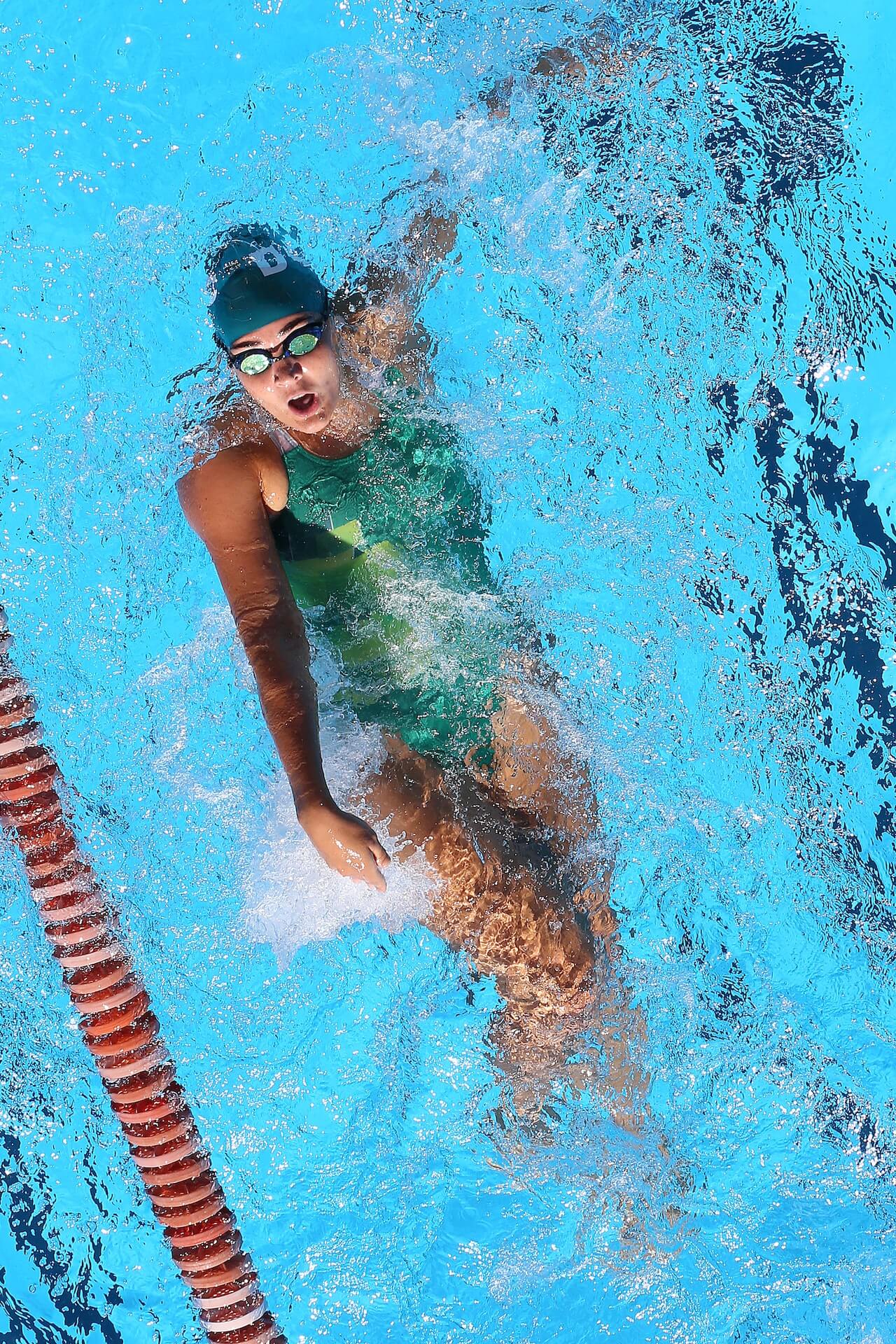When it comes to choosing an effective workout, you might wonder whether swimming or running is more challenging. Both activities offer excellent cardiovascular benefits, but each presents its unique obstacles and learning curve.

Swimming can be considered more challenging than running due to the resistance water provides and the limitations it poses on breathing. Unlike running, which utilizes our bodies’ natural capability to move on land, swimming requires more muscle groups and skills to navigate and stay afloat in the water. However, running burns more calories than swimming.
In this article, we will be comparing running and swimming head-to-head to help you decide which workout best suits your needs and preferences.
Comparing Swimming and Running
Muscle Groups Involved
When it comes to swimming, you utilize a variety of muscles throughout your body. Swimming engages your core, shoulders, arms, legs, and back muscles for a total body workout.
On the other hand, running mainly targets your lower body muscles, such as the quadriceps, hamstrings, and calf muscles. However, running also requires some engagement of your core and upper body muscles for stability and momentum.
Effort and Endurance
Swimming and running both offer effective cardio workouts, but the level of effort and endurance required is different for each activity.
In swimming, you need to be constantly moving your arms and legs to stay afloat and propel yourself through the water. This aquatic environment adds resistance to your movements, which can result in a more intense workout even at a leisurely pace.
In contrast, running on land allows for more natural breathing and does not require as much constant effort to maintain forward momentum.
The Benefits of Swimming

Low Impact on Joints
One major advantage of swimming is that it’s a low-impact exercise, which means it’s easier on your joints compared to other forms of exercise like running. When you’re in the pool, the water supports your body weight and reduces the stress on your joints, making it an ideal workout option for people with joint pain or those recovering from an injury. Plus, swimming helps to build your endurance and maintain your cardiovascular health.
Versatility of Strokes
Swimming offers a variety of strokes, allowing you to target different muscle groups and keep your workouts engaging. The versatility of strokes in swimming also helps to improve your overall fitness level, as each stroke requires different levels of strength and technique.
Some popular strokes include the freestyle, breaststroke, backstroke, and butterfly. By incorporating different strokes into your swimming routine, you can enhance your muscle tone, build strength, and improve your overall endurance.
The Benefits of Running

Outdoor Experiences
Running in the great outdoors not only gives you an incredible workout but also connects you with nature. Outdoor runs enable you to appreciate the fresh air, diverse environments, and beautiful landscapes. Each run can turn into a unique adventure, enhancing your mental well-being and mood while you challenge your endurance.
Exercising outdoors has additional advantages like increased cardio benefits and overall health improvements. For example, when you run on uneven terrain, you work on your coordination and balance, strengthening different muscle groups and engaging your core.
Accessibility
One of the best aspects of running is its accessibility. All you need is a pair of comfortable running shoes, and you’re good to go. You can run on sidewalks, parks, trails, or even on a treadmill if the weather doesn’t permit outdoor activities. Thanks to its minimal equipment requirements, running is a cost-effective and convenient way to maintain your fitness.
Running also provides a fantastic opportunity for socializing. You can join local running clubs, participate in races or charity events, or simply run with your friends and family. Sharing your passion for running with others can keep you motivated and make exercising much more enjoyable.
Skills and Techniques

Swimming Skills
When it comes to swimming, there are several skills and techniques you need to master. One key aspect is learning how to breathe efficiently while swimming. Through proper breathing techniques, you can enhance your performance and reduce the need for excessive rest.
Swimming also requires you to use various muscle groups simultaneously, which can be both challenging and rewarding. Some essential swimming strokes to learn include:
- Freestyle: This stroke involves alternating arm movements while kicking your legs continuously. It’s crucial to streamline your body position to reduce water resistance and increase efficiency.
- Breaststroke: With simultaneous arm and leg movements, the breaststroke relies on a unique kicking motion called the “whip kick” for propulsion. Proper timing is vital for this stroke to conserve energy and maintain speed.
- Backstroke: As the name suggests, you swim on your back in this stroke. It requires strong arm pulls and flutter kicks while maintaining a steady head position to reduce strain and ensure proper alignment.
Running Skills
When it comes to running, the focus shifts from various strokes to efficient body mechanics and endurance building. Some key elements of developing your running skills include:
- Proper running form: Maintaining good posture, engaging your core, and using efficient arm swings can help you run more efficiently and avoid unnecessary fatigue.
- Stride length and cadence: It’s crucial to find the right balance between stride length and cadence (steps per minute) to optimize your running performance and minimize the risk of injury.
- Rest and recovery: Unlike swimming, running puts constant stress on your joints and muscles. It’s essential to incorporate rest days and recovery techniques like stretching and foam rolling to ensure your body stays in top condition.
Both swimming and running require the development of unique skills and techniques to excel in each sport.
However, due to the number of strokes one needs to learn and how technical all of them can be, swimming is harder than running in terms of technique.
Cardiovascular Exercise and Calorie Burn

When it comes to cardiovascular exercise, both swimming and running are great options. They each offer a variety of benefits for your heart and overall cardio fitness. However, there are some differences between the two exercises that might make one more appealing to you than the other.
In terms of calorie burn, running usually comes out on top. According to Harvard Medical School, the calorie burn for running is generally higher than that of swimming for the same amount of time spent exercising. This means that if your primary goal is to burn calories, running might be the better choice.
Swimming, on the other hand, offers some unique advantages when it comes to cardio fitness. Unlike running, it provides a low-impact workout that is gentle on your joints, making it an excellent option if you’re looking to improve your cardiovascular health without causing unnecessary stress on your body. Additionally, swimming works a wider range of muscles, which can help with overall flexibility and balance.
Injuries and Rehabilitation
Common Injuries in Swimming
Swimming is a low-impact sport that is known for being gentle on joints, making it particularly appealing for people with conditions such as osteoarthritis. However, it is not entirely risk-free, and there are still injuries commonly associated with swimming.
These injuries tend to involve overuse or issues with muscle imbalances and primarily affect the shoulders, elbows, and knees.
As you swim, keep in mind that proper form is essential in preventing injury. The repetitiveness of swimming strokes can place significant demand on your arms and shoulders, leading to issues such as rotator cuff tendinitis and swimmer’s shoulder.
To help minimize these risks, remember to incorporate strength training for your muscle groups outside of the pool, such as at the gym, to maintain a balanced overall fitness level.
Common Injuries in Running
Running is a high-impact sport that can take its toll on various parts of your body. This form of exercise places strain on the lower body, particularly the knees, ankles, and hips, often resulting in injuries such as shin splints, stress fractures, and runner’s knee.
For endurance athletes, the risk of injuries can increase, as their intense training routines push muscles and joints to their limits.
While some degree of injury risk is unavoidable in running, there are a few things you can do to mitigate this risk:
- Wear well-fitted and properly cushioned running shoes to provide support and minimize joint strain.
- Gradually increase your running distance and speed, allowing your body to adapt to the demands.
- Incorporate resistance training, such as workouts in the gym, to ensure your muscle groups surrounding the joints are strong and stable.
Remember, both swimming and running can offer many benefits and come with their fair share of downsides, but ultimately, what works best for your body depends on your specific needs.
At the end of the day, swimming is arguably harder than running when you compare them, but this is not exactly an apples to apples comparison. Running might end up being easier than swimming if you have a fear of the water, for example.
By being aware of each sports’ strengths and weaknesses, you can decide which sport you’d rather do, or you can do them both, as there are some fantastic cross-training applications for swimming and running.
Frequently Asked Questions
Does swimming burn more calories than running?
Swimming and running both burn calories, but the number of calories burned in each activity depends on factors such as your weight, intensity, and duration. Generally, running burns more calories than swimming for the time spent exercising at a similar level of training intensity.
Which is more effective for weight loss: swimming or running?
While running burns more calories, it’s also harder on the joints, so that might give some people pause, especially if they are on the heavy-side to start with. The most important aspect is to find an activity that you enjoy and can consistently perform, making it easier to maintain in your lifestyle and achieve long-term results.
Is swimming 1 km equivalent to running a certain distance?
There is no exact conversion between swimming and running distances, as the two activities require different muscle groups and energy systems. However, swimming 1 km is generally considered more challenging than running the same distance. The discrepancy is due to factors such as water resistance and the technical skills required in swimming. The effort required to swim 1 km might be roughly comparable to running 3-4 km, depending on your individual fitness levels and experience in both sports.
Are swimming and running workouts comparable to each other?
Swimming and running workouts can be designed to target similar goals such as endurance, cardiovascular fitness, and muscle strength. However, the two activities rely on different muscle groups and techniques. Swimming primarily utilizes your upper body and core muscles, while running engages your lower body and core.
While crossover benefits exist, it’s essential to remember that swimming is a skill sport and requires specific technique improvements. If you enjoy both swimming and running, you might consider incorporating them into a well-rounded training program to maximize the benefits.
What’s the equivalent of running a marathon in swimming terms?
There isn’t a direct swimming equivalent to running a marathon. Marathon swimming events usually cover distances between 10 km and 25 km, while a traditional marathon is about 42.2 km. Comparing the two is difficult, as it depends on factors such as skill level, water conditions, and individual physical abilities. While some athletes may feel that marathon running is slightly easier, opinions will vary based on personal experience in both sports.
Sources:
